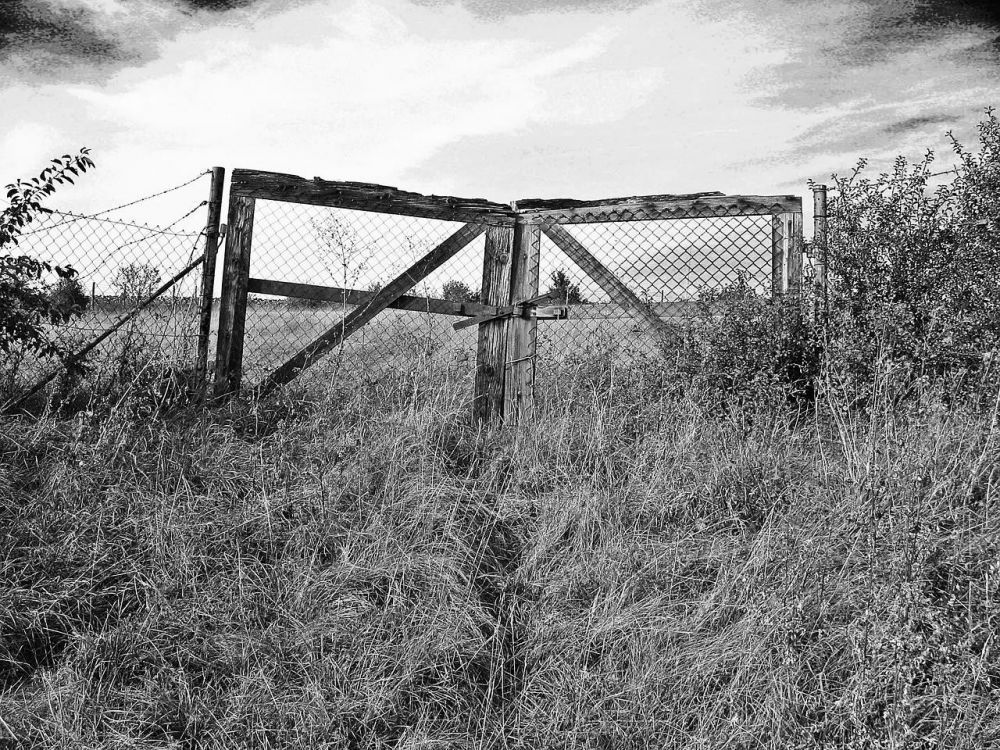
Why Do Fence Gates Sag – and How to Prevent It
It’s a fairly common problem in the fence world – but many people still wonder why do fence gates sag.
The problem is, there’s no one size fits all solution. So while it might be easy to look a the gate in the picture and answer the question “why do fence gates sag”, but in many cases, it’s not. Read on, because we’ve got answers about why do fence gates sag, as well as design choices you can make to prevent it.
Why Do Fence Gates Sag?
There are several reasons why your gates might sag. Sometimes, the gates themselves have frames that are just too flimsy, and over time, their own weigh pulls them out of square.
Sometimes, in northern climates, where there is a lot of snow and ice, frost heave moves a post out of position, causing the gate to sag.
Other times, gates are hung on posts that aren’t strong enough, or they don’t have a large enough concrete footing. There are many reasons why gates might sag, and a lot of it is about the design and installation of the gate – but there’s no one size fits all answer to the question of why do fence gates sag.
So if your gate is sagging, you will need to call a fence contractor to come and take a look, and propose a solution for your specific gate.
How to Prevent Gates Sagging
The good news is that there are many more ways to prevent gates from sagging than there are answers to the question of why do fence gates sag!
Many of these should be part of your gate design before it’s ever made and hung, but some can be used to rehang a gate that has started to sag and solve the problem. So here are a few potential solutions.
1. Use Heavy Duty Posts
Gates are a lot heavier than their matching fences most of the time, so you usually can’t get away with just using a fence post to hang them on. Your gate posts should almost always be larger than your terminal or tension posts, unless you’re hanging a small, lightweight man gate or pedestrian gate.
2. Put Them in Big concrete Footings
If your gate is large and heavy, installing your gate posts in deeper concrete footings and making them larger than your fence post concrete footings will create a better “anchor” for the whole gate. Heavy concrete gate post bases will act as a counterbalance, helping to keep the whole structure square and level.
3. Build a Sturdy Gate Frame
Gate frames are tricky to design. They need to be heavy duty enough to carry the weight of the gate without buckling or sagging, but light enough so they don’t over stress the gate posts.
Additional design features like bracing and gusset plates can make gate frames stronger, as can making them out of materials like angle iron instead of tubing.
4. Use Bracing
Whether you call them braces or gate stays, and whether they’re horizontal between two posts or diagonal and installed in concrete, gate braces help to transfer the weight and force of the gate from the gate posts alone to the post or concrete base alongside it.
Braces and diagonal stays are usually installed higher up on the gate posts, as they will tend to want to bend higher up, and they can be bolted or welded in place, depending on the design.
If the braces are going to be installed between a gate post and an adjacent post, they adjacent post may be closer to the gate post than normal post spacing for that fence type.
5. Use a Gate Wheel
Sometimes, the simples answer to the question why do fence gates sag (and how to prevent it) is to add a gate wheel onto each leaf of the gate. These wheels are designed to carry some of the weight and force in the center of the gate, which removes some of the strain on the gate posts.
Gate wheels can be spring loaded to deal with some uneven ground conditions, but they usually need to be used on relatively level ground.
6. Use Good Quality Hinges
Often, the question of why do fence gates sag is all about the hardware. If your gate is sagging, the firs thing you should do is check your hinges. Some can be adjusted, but if they’re showing visible signs of strain, you might need to swap them for a heavier duty option.
If you’re hanging a particularly heavy gate, it’s sometimes better to use three hinges per leaf than two, and if it’s very tall, adding the third hinge closer to the top can help to spread the weight load of the gate out over the length of the post.
Good Gate Design Prevents Sagging
The simple truth is that a well designed gate shouldn’t sag, and if you are asking the question why do fence gates sag, there’s a good chance there’s a material problem with your gate somewhere.
Contact a reputable local fence contractor and have them come out to inspect the problem. There might be an easy fix, or they may need to replace all or some of the gate components. But whatever they do, it’s better than a sagging gate!

